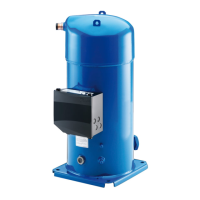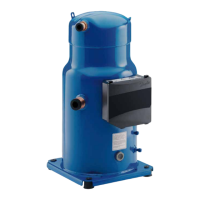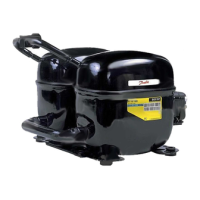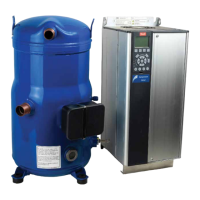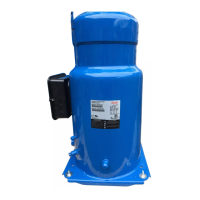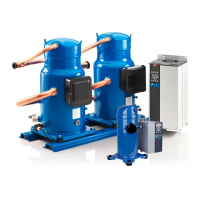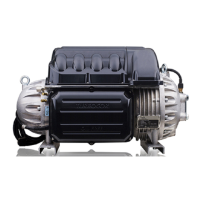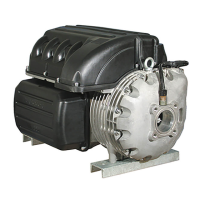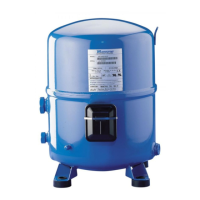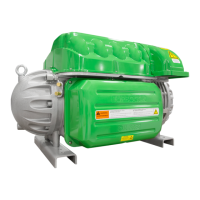42
FRCC.PC.007.B8.02
Application guidelines
Installation
Pressurize the system on HP side rst then LP side
to prevent rotation of the scroll. Never let the
pressure on LP side exceed the pressure on HP
side with more than 5 bar.
On SH180-240-295-300-380-485 mo
dels which
have an internal non return valve in discharge
tting or if an external non return valve is present
on the discharge line, we advise to pressurize
the system not quicker than 4.8 bar/s to all
ow
pressure equalization between LP and HP side
over scroll elements.
Leak detection must be carried out using a
mixture of nitrogen and refrigerant or nitrogen
and helium, as indicated in the table below.
Ne
ver use other gasses such as oxygen, dry air
or acetylene as these may form an in ammable
mixture.
Pressurize the system on HP side rst then LP
side.
Moisture obstructs the proper functioning of the
com
pressor and the refrigeration system.
Air and moisture reduce service life and increase
condensing pressure, and cause excessively high
discharge temperatures, which can destroy the
lubricating properties of the oil. Air and moisture
a
lso increase the risk of acid formation, giving
rise to copper platting. All these phenomena
can cause mechanical and electrical compressor
failure.
For these reasons it’s important to perform a
vacuum dehydration on the system to remove
all residual moisture from the pipe-work after
assembly;
SH compressors are delivered with < 100 ppm
moisture level. The required moisture level in the
circuit after vacuum dehydration must be < 100
ppm for systems
with an SH.
• Never use the compressor to evacuate the
system.
• Connect a vacuum pump to both the LP & HP
sides.
• Evacuate the system to a pressure of 500 μm
Hg (0.67 mbar) absolute.
Do not use a megohm meter
nor apply power to
the compressor while it’s under vacuum as this
may cause internal damage.
Leak detection
Vacuum evacuation and
moisture removal
Filter driers A properly sized & type of drier is required.
Important selection criteria include the driers
water content capacity, the system refrigeration
capacity and the system refrigerant charge.
The drier must be able to reach and maintain
a moisture level of 50 ppm end point dryness
(EPD).
For new installations with SH compressors with
polyolester oil, Danfoss recommends using the
Danfoss DML (100% molecular sieve) solid core
lter drier. Molecular sie
ve lter driers with loose
beads from third party suppliers shall be avoided.
For servicing of existing installations where acid
formation is present the Danfoss DCL (solid core)
lter driers containing activated alumina are
recommended.
The d
rier is to be oversized rather than under
sized. When selecting a drier, always take into
account its capacity (water content capacity),
the system refrigeration capacity and the system
refrigerant charge.
After burn ou
t, remove & replace the liquid line
lter drier and install a Danfoss type DAS burn-
out drier of the appropriate capacity. Refer to the
DAS drier instructions and technical information
for correct use of the b
urnout drier on the liquid
line.
Leak detection with refrigerant Leak detection with a mass spectrometer
Nitrogen & R410A Nitrogen & Helium
Note 1: Leak detection with refrigerant may be forbidden in some countries. Check local regulations .
Note 2: The use of leak detecting additives is not recommended as the
y may a ect the lubricant properties.
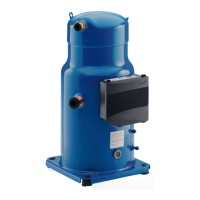
